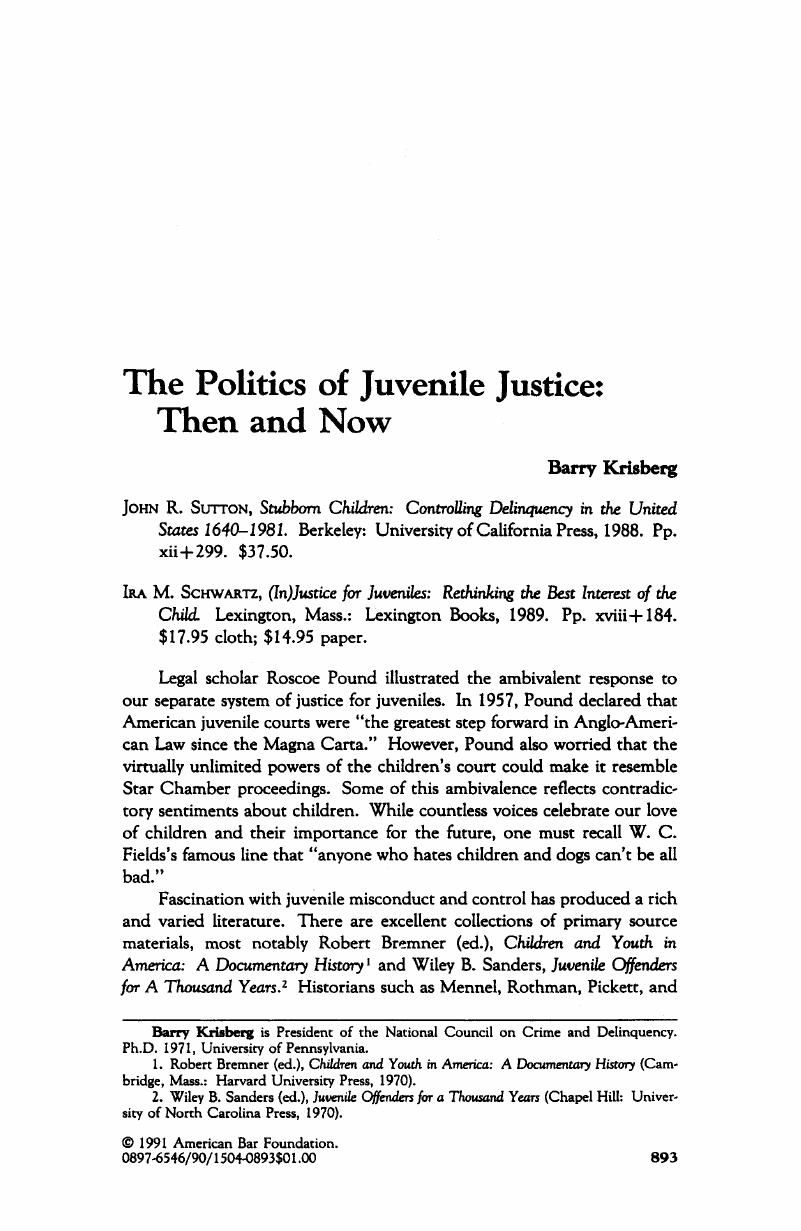Published online by Cambridge University Press: 27 December 2018

1 Robert Bremner (ed.), Children and Youth in America: A Documentary History (Cambridge, Mass.: Harvard University Press, 1970).Google Scholar
2 Wiley B. Sanders (ed.), Juvenile Offenders for a Thousand Years (Chapel Hill: University of North Carolina Press, 1970).Google Scholar
3 David Rothman's works include Conscience and Convenience: The Asylum and its Alternatives in Progressive America (1980); Doing Good: The Limits of Benevolence (1978); and The Discovery of the Asylum: Social Order and Disorder in the New Republic (1971), all published by Little, Brown St Co., Boston.Google Scholar
4 Barry Krisberg & James Austin, “Wider, Stronger and Different Nets: The Dialectics of Criminal Justice Reform,” 18 J. Research Crime & Delinq. 165 (1981).CrossRefGoogle Scholar
5 Barry Krisberg & Ira Schwartz, “Rethinking Juvenile Justice,” 29 Crime & Delinq. (1983).CrossRefGoogle Scholar
6 These states completely closed their large juvenile correctional facilities. Both jurisdictions confine a very few youths in small, secure facilities. The majority of juvenile offenders in Utah and Massachusetts are managed in community-based programs.Google Scholar
7 John Blackmore, Marci Brown, & Barry Krisberg, Juvenile Justice Reform: The Bellwether States (Ann Arbor: Center for the Study of Youth Policy, University of Michigan, 1988).Google Scholar
8 David Steinhart, California Opinion Poll: Public Attitudes Towards Youth Crime (San Francisco: National Council on Crime and Delinquency, 1988).Google Scholar
9 Data on public perception and its falsity are reported in Bureau of Justice Statistics, Report to the Nation on Crime (Washington, D.C.: Government Printing Office, 1988).Google Scholar
10 Marvin Wolfgang, “Abolish the Juvenile Court,”Cal Law., Nov. 1982, at 12–13.Google Scholar